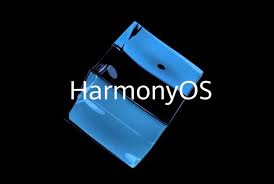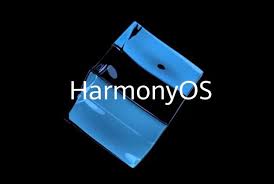
Harmony OS, the long rumored first-party operating system of Chinese tech giant Huawei was unveiled by it. The company has been developing the OSD for quite some years now.
However it had recently become important for Huawei in the face of the US ban which prevented it from doing business with American companies.
The first details about its in-house OS were shared by the company at its Huawei Developer Conference. However the company is currently not in a position to show off the OS working on a smartphone and the company has said as of now, it would stick to the Android as the OS for its Huawei and Honor branded smartphones and tablets
Similar to Google’s in-development Fuchsia OS, the Harmony OS is microkernel-based system. But unlike the new Harmony OS, the Fuchsia uses a “non-distributed design,” Huawei says.that would give the luxury to Huawei to deploy the new OS on various devices which would consequently ease the development of app in all scenarios, Huawei says.
According to Huawei it is “hard to deliver a smooth experience across different devices with [a] huge amount of [code] in Android and Linux core.” It further said that it was because “multi-device interconnection [raises] requirements for security” and the “close-coupling between [the] app ecosystem and [the] hardware compromises [the] user experience and development efficiency.”
According to Huawei, security is also enhanced by the use of a microkernel. While most system services are implemented in user space, the microkernel only “provides the most basic services like thread scheduling and IPC”.
In order to secure the TEE kernel, it is using “formal verification methods”, Huawei also said. This is a technique that is mainly applied to security-critical fields like aerospace and chipsets, “significantly contributing to system reliability and robustness” and it uses a “mathematical approach to validate system correctness from the source.” It added that the microkernel can furthermore be “scaled on demand for wider system security.”
According to slides shared by Huawei, the performance of the Huawie OS should be better than Android and other Linux-based operating systems ay least in theory. A distributed virtual bus with a simplified protocol is used by the OS, Huawei said, and added that instead of being composed of 4 layers, there is only 1 layer in the protocol stack so that there is a “boost to the payload efficiency.” The result of this alterations aimed to simplify interactions are “faster discovery and connections” of hardware such as the display, cameras, speakers, etc.
Harmony OS uses a “deterministic latency engine” that provides “precise resource scheduling with real-time load analysis and forecasting and app characteristics matching”, instead of the Linux kernel’s scheduling mechanism as is used in Android. That results in improvement in response latency and latency fluctuation at the rates of 25.7 per cent and 55.6 per cent respectively.
According to Huawei, its new OS is a completely new generation of operating systems because it allows the use of artificial intelligence under different scenarios – ranging from the PCs to tablets, and other domains.
(Source:www.techcrunch.com)
However it had recently become important for Huawei in the face of the US ban which prevented it from doing business with American companies.
The first details about its in-house OS were shared by the company at its Huawei Developer Conference. However the company is currently not in a position to show off the OS working on a smartphone and the company has said as of now, it would stick to the Android as the OS for its Huawei and Honor branded smartphones and tablets
Similar to Google’s in-development Fuchsia OS, the Harmony OS is microkernel-based system. But unlike the new Harmony OS, the Fuchsia uses a “non-distributed design,” Huawei says.that would give the luxury to Huawei to deploy the new OS on various devices which would consequently ease the development of app in all scenarios, Huawei says.
According to Huawei it is “hard to deliver a smooth experience across different devices with [a] huge amount of [code] in Android and Linux core.” It further said that it was because “multi-device interconnection [raises] requirements for security” and the “close-coupling between [the] app ecosystem and [the] hardware compromises [the] user experience and development efficiency.”
According to Huawei, security is also enhanced by the use of a microkernel. While most system services are implemented in user space, the microkernel only “provides the most basic services like thread scheduling and IPC”.
In order to secure the TEE kernel, it is using “formal verification methods”, Huawei also said. This is a technique that is mainly applied to security-critical fields like aerospace and chipsets, “significantly contributing to system reliability and robustness” and it uses a “mathematical approach to validate system correctness from the source.” It added that the microkernel can furthermore be “scaled on demand for wider system security.”
According to slides shared by Huawei, the performance of the Huawie OS should be better than Android and other Linux-based operating systems ay least in theory. A distributed virtual bus with a simplified protocol is used by the OS, Huawei said, and added that instead of being composed of 4 layers, there is only 1 layer in the protocol stack so that there is a “boost to the payload efficiency.” The result of this alterations aimed to simplify interactions are “faster discovery and connections” of hardware such as the display, cameras, speakers, etc.
Harmony OS uses a “deterministic latency engine” that provides “precise resource scheduling with real-time load analysis and forecasting and app characteristics matching”, instead of the Linux kernel’s scheduling mechanism as is used in Android. That results in improvement in response latency and latency fluctuation at the rates of 25.7 per cent and 55.6 per cent respectively.
According to Huawei, its new OS is a completely new generation of operating systems because it allows the use of artificial intelligence under different scenarios – ranging from the PCs to tablets, and other domains.
(Source:www.techcrunch.com)














